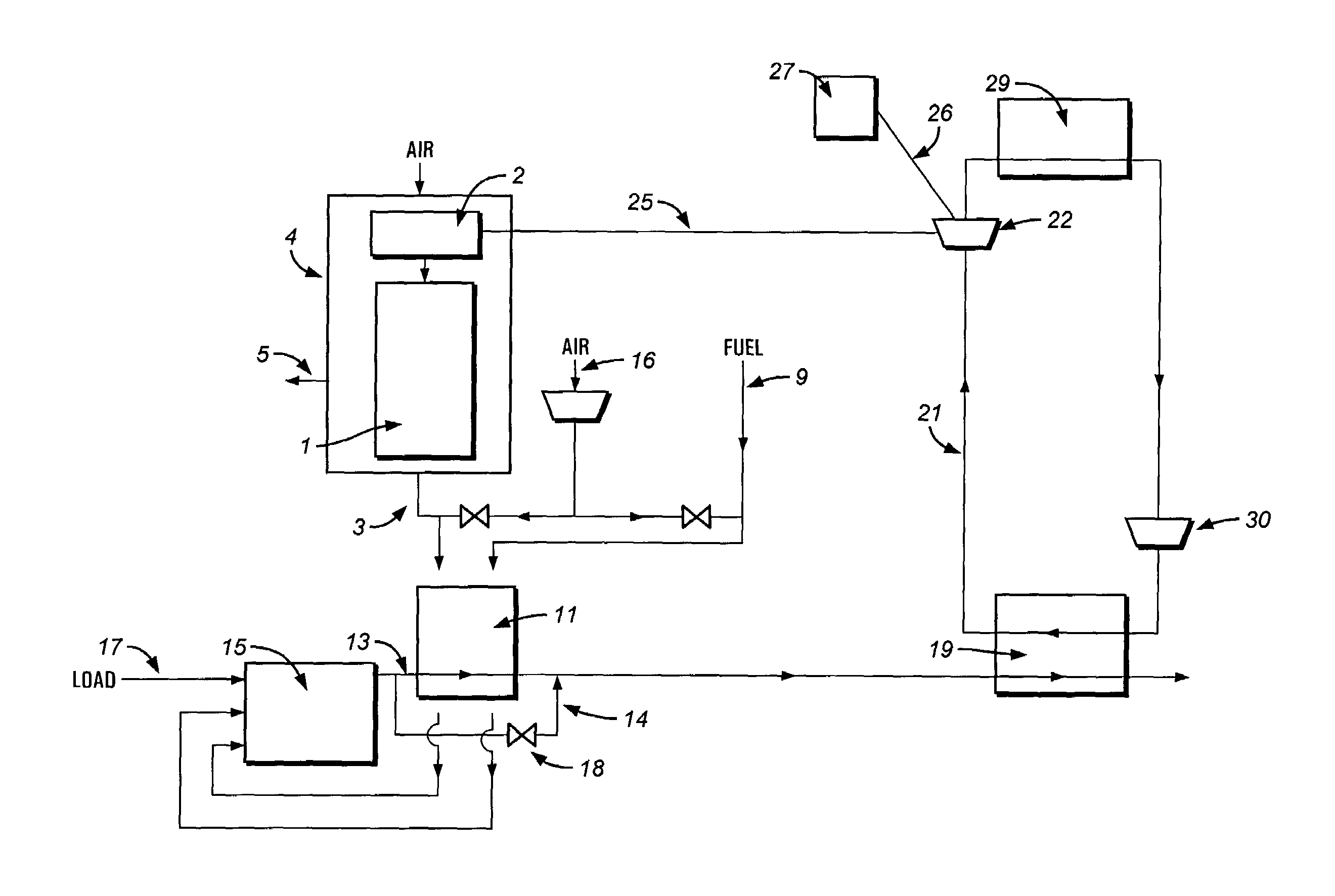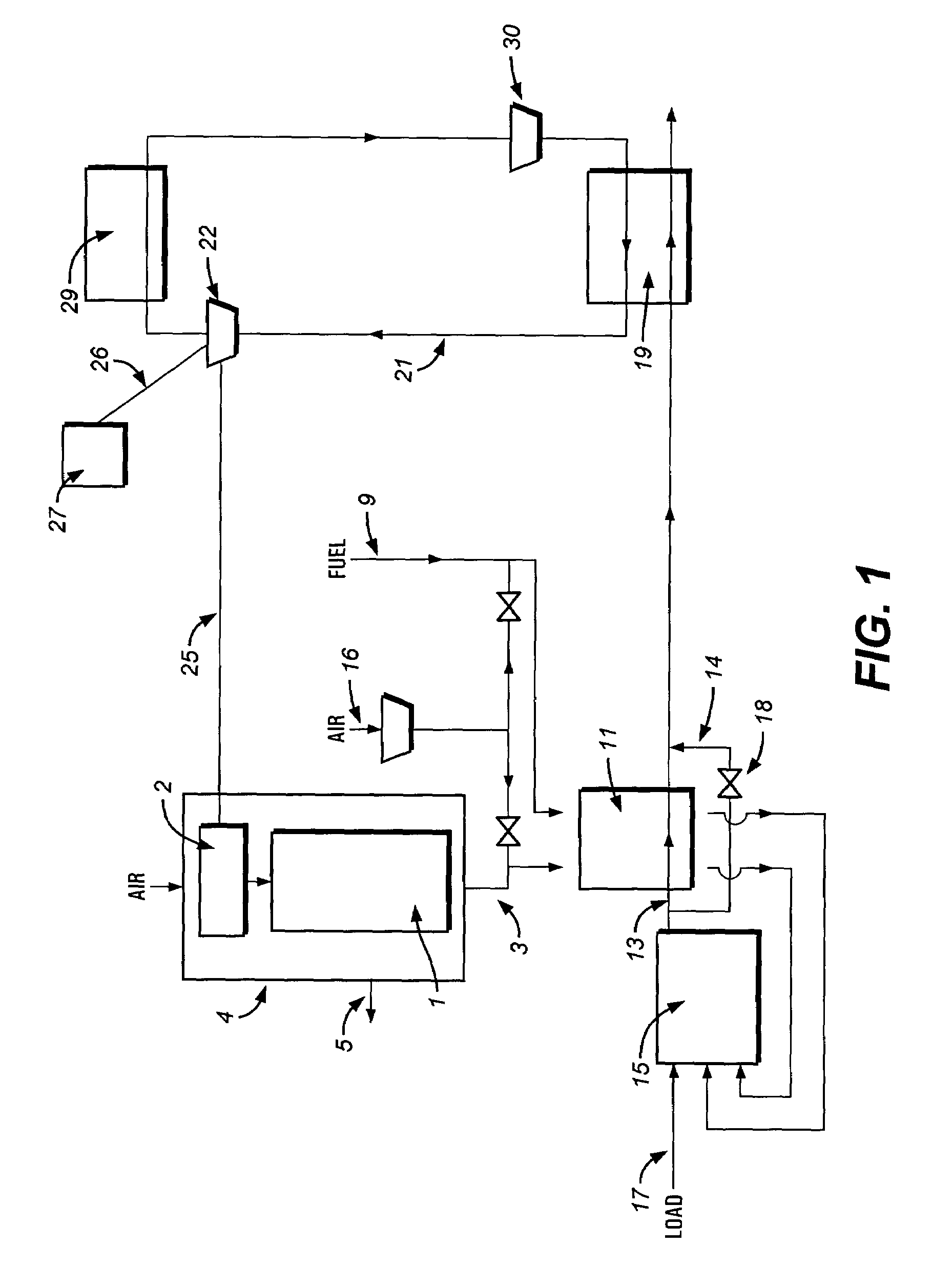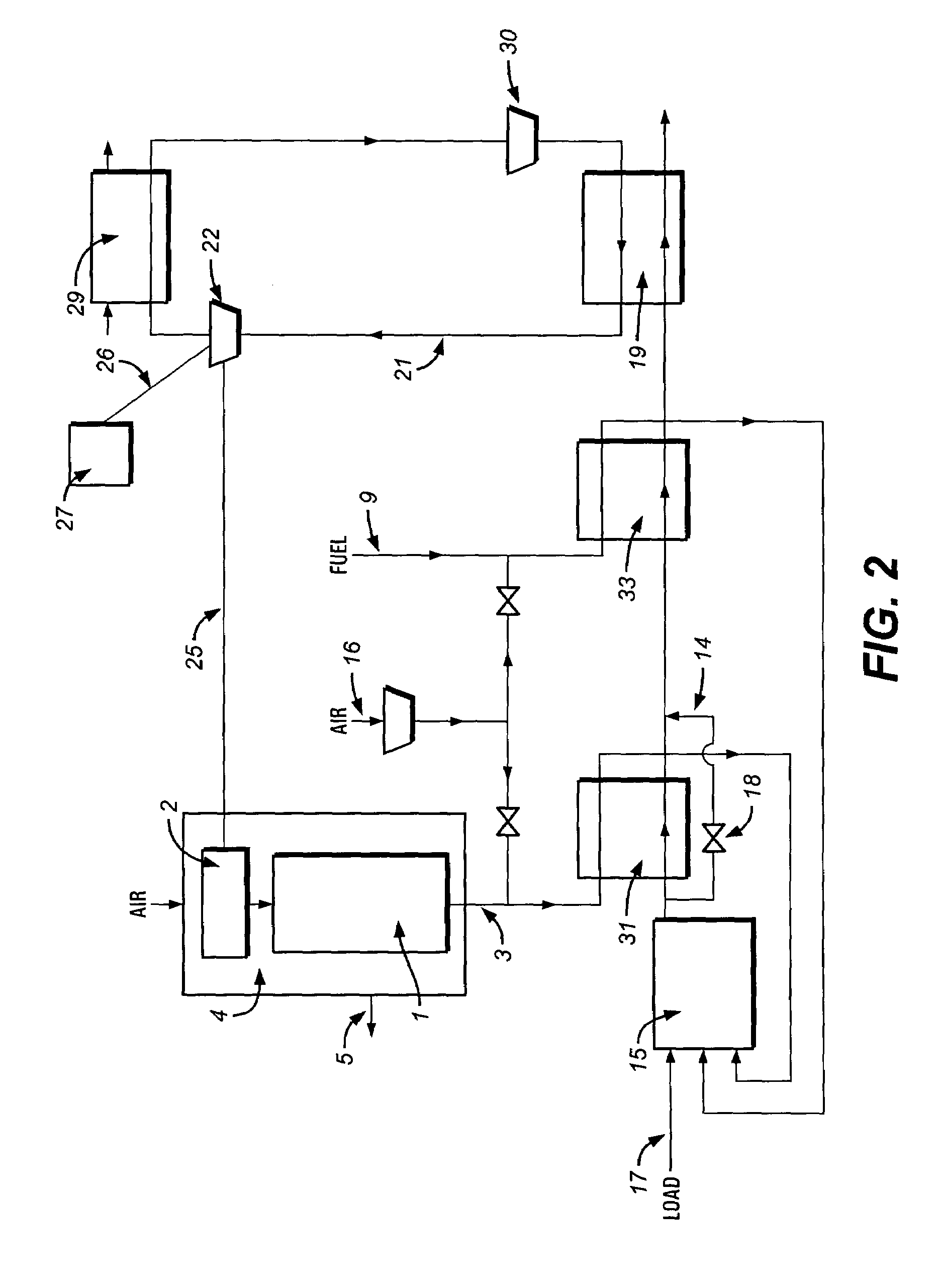Integrated heat recovery systems and methods for increasing the efficiency of an oxygen-fired furnace
- Summary
- Abstract
- Description
- Claims
- Application Information
AI Technical Summary
Benefits of technology
Problems solved by technology
Method used
Image
Examples
Embodiment Construction
[0024]A system of the invention is for increasing the efficiency of oxygen-enriched combustion in industrial furnaces through integrated heat recovery strategies in which oxidant and fuel gases are combusted thereby producing flue gas. The system includes a source of oxygen-enriched gas, at least one heat exchanger system, a waste heat boiler and a turbine. The oxygen-enriched gas has an oxygen level higher than that of air. The heat exchanger(s) absorbs thermal energy from the flue gas and transfers it to at least one of the oxidant and fuel gases. The waste heat boiler also absorbs thermal energy from the flue gas and transfers it to feed water to produce superheated steam. The turbine produces mechanical power by allowing the superheated steam to be expanded therethrough.
[0025]A method of the invention is for increasing the efficiency of an oxygen-enriched combustion furnace in which oxidant and fuel gases are combusted such that flue gas is produced. The method includes the foll...
PUM
| Property | Measurement | Unit |
|---|---|---|
| Temperature | aaaaa | aaaaa |
| Temperature | aaaaa | aaaaa |
| Temperature | aaaaa | aaaaa |
Abstract
Description
Claims
Application Information
 Login to View More
Login to View More - R&D
- Intellectual Property
- Life Sciences
- Materials
- Tech Scout
- Unparalleled Data Quality
- Higher Quality Content
- 60% Fewer Hallucinations
Browse by: Latest US Patents, China's latest patents, Technical Efficacy Thesaurus, Application Domain, Technology Topic, Popular Technical Reports.
© 2025 PatSnap. All rights reserved.Legal|Privacy policy|Modern Slavery Act Transparency Statement|Sitemap|About US| Contact US: help@patsnap.com



